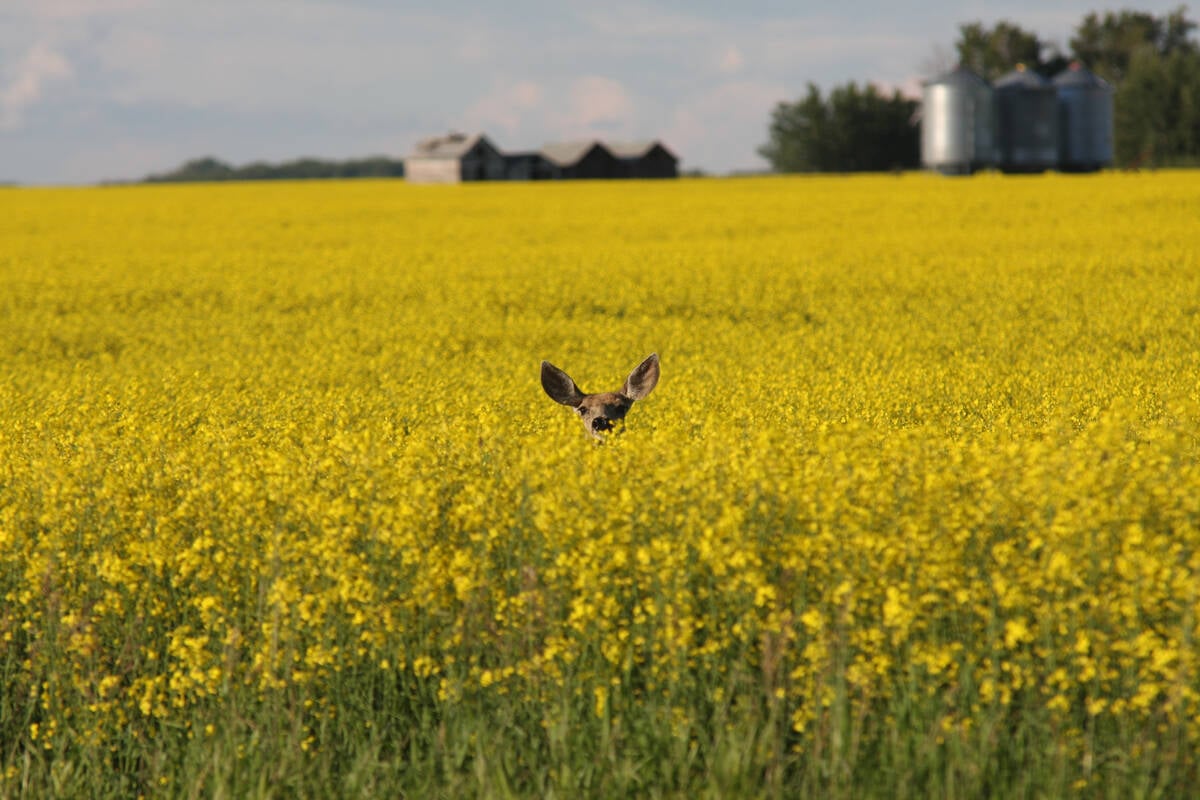In North America, the turkey is seen as a symbol of prosperity. Canadians eat it usually during Thanksgiving and Christmas.
But over the past year there has been a change to eating habits. Canadians ate more turkey than usual, and not just during the obvious seasons. Comparing this year to last, domestic consumption of turkey rose about six percent.
Greg Smith, executive director of Alberta Turkey Producers, said Canadians’ appetite for turkey is good news.
“If the market is growing, the individual producers in this country should benefit, some to a greater degree than others, but in general I would say all producers will benefit,” he said.
Read Also

Drones now used to assess wildlife crop damage in Saskatchewan
Wildlife damage in Saskatchewan crops is now assessed by drones and artificial intelligence.
The 2005-06 year was a record setting one, according to the Canadian Turkey Marketing Agency. Canadians ate 138.8 million kilograms of turkey meat, beating the previous record of 133.4 million kg set in 1997.
“The growth in turkey consumption that we’ve seen is significant because it is greater than the growth of the population,” said John Sheldon, manager of market information for the CTMA. “I suspect it could be part of a long-term trend.”
The 543 Canadian turkey growers also set record levels of production, turning out 158.6 million kg of turkey, or 7.4 percent more than the previous year. A CTMA newsletter said the increase was “easily absorbed by the Canadian market” and describes the market as healthy.
Sales of whole turkeys during holiday seasons are still significant. In 2005, Canadians purchased three million whole turkeys during Thanksgiving and four million during Christmas. The two seasons account for 73 percent of annual sales of whole turkeys.
But the reason for the increase in overall turkey meat consumption is found on the menus of the large food service chains. Many of them feature turkey, said Sheldon.
Kevin Kane, spokesperson for the restaurant chain, said turkey is the company’s best selling sub.
The Canadian company Mr. Sub also features turkey subs and characterizes them as top sellers, although neither would release specific sales information.
Other large food service chains in Canada are looking at consumer reaction south of the border. Some turkey products are selling well in the United States, said Andy Lubinsky, director of marketing for Wendy’s Canada.
“The U.S. (Wendy’s) did launch a line of sandwiches called Frescata which are deli sandwiches, and some of those sandwiches do contain turkey,” he said. “It’s been very successful in the U.S., and we are, as we always do, looking at products like that for Canada. It’s on our radar screen.”
Figuring out how much turkey can be produced is part of the supply managed industry’s task. Through consultation with the turkey industry, the CTMA annually estimates the demand and allocates quota to eight provincial boards. From there, the provincial boards give out quota levels to individual producers.
The increase in domestic turkey consumption is welcome news to producers because it could mean an increase in quota.
“It’s a really good sign,” said Emmy Byle, a producer from Balmoral, Man. Manitoba turkey barns have room for 30 percent more birds, so news that might help increase quota is positive, she said.
“On our farm, we only got 13,500 kg more (quota). Most of the increase in production in the country went to B.C. and Alberta, and what was left divided between all the other provinces doesn’t equate to a whole lot, but it’s a lot better than being cut back,” Byle said.
The CTMA increased allocation in every province for the 2006-07 year, although not equally. In Western Canada, B.C.’s 49 turkey producers and Alberta’s 51 received the largest increases; the former up 22.6 percent from last year’s 15.5 million kg allocation; the latter up 10 percent from last year’s 12 million kg.
Phil Boyd, executive director of the CTMA said that a new allocation policy is being developed and he is optimistic about its acceptance by the agency.
“We have the framework of it pretty much in place… we’re putting some finishing touches to it, there’s still a few things to be resolved, but we’re anticipating it will be presented to our board by the allocation committee at our November meeting,” he said.














